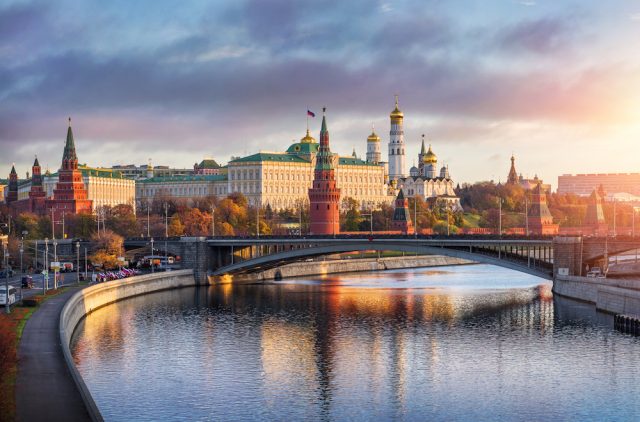‘Psychological tension’ driving alcoholic drink demand in Russia
By Eugene GerdenThe demand for alcoholic drinks is growing in Russia, which is mainly due to “psychological tension” from the pandemic, the Russia-Ukraine war, and the weakening effect of previous anti-alcohol measures. Eugene Gerden reports.

The news comes from conclusions by analysts of the Russian public project “To be Precise”, which is based on the data of the Russian Central Research Institute of Organisation and Information of Health Care, the Russian State Statistics Service Rosstat, and the local alcohol regulator Rosalkogolregulirovanie.
According to its report, in the late 2000s the demand for alcoholic drinks among Russian began to decline due to their switch to wine and beer over strong drinks.
In 2007, there were 11 litres of pure alcohol per consumer over 15 years of age, but by 2017 it was already 7 litres, and now, analysts say, sales have begun to rise again.
In 2023, the figure reached 8 litres, which became a record figure for the last nine years.
Consumption increase
Evgeny Andreev, a leading researcher at the Center for Demographic Research of the Russian Economic School (NES), said in an interview with the Russian Kommersant business paper: “Currently the per capita sales of absolute alcohol are growing in Russia. This clearly indicates an increase in consumption. This is how the population responds to difficulties.”
According to authors of the study, the actual level of consumption may be almost a third higher than that shown by official statistics.
They refer to the corresponding calculation methods of the Ministry of Health, based on data on mortality, incidence of alcoholic psychosis and the difference between life expectancy at birth of women and men.
In addition, Russia has been traditionally suffering from high share of counterfeit alcoholic drinks. This includes not only counterfeit alcohol, but also surrogates and moonshine.
Strong drinks
About 60% of alcoholic drinks in the local market account for strong drinks: vodka, cognac, liqueurs.
Traditionally the biggest consumption of alcoholic drinks in Russia is observed in the Northern (the Nenets Autonomous Region, Sakhalin) and Eastern regions of Russia.
The latter also the poorest regions of the country, which were significantly hit by mobilisation to the Russian army. In that case the average per capita consumption is estimated at 21 litres of alcoholic drinks per year at present, which is by 25-30% higher those in 2019.
The growth of consumption is also observed in the Muslim regions of Russia, particularly Chechnya and Dagestan, despite the existing ban on alcoholic consumption due to religious issues.
Partner Content
Weakened policy
While state analysts expect the growth of alcoholic drinks’ consumption in Russia to be due to the coronavirus pandemic and the current stressful period in the country, most independent analysts believe the demand for alcoholic drinks began to grow even before the crises.
According to Marina Kolosnitsyna, professor of the Faculty of Economic Sciences at the Higher School of Economics, one of Russia’s most prestigious universities in the field of economics, the current steady growth in sales is the result of a “weakening anti-alcohol policy”, which is observed in Russia at present.
As analysts of HSE have also added during the mid-2000s, a minimum price threshold for vodka was imposed in Russia. In addition, excise taxes increased, and
local stores were prohibited from selling alcohol at night time.
They also believe during the period of 2010-2020 Russia experienced a quiet anti-alcohol campaign in Russia, when prices for most of alcoholic drinks, primarily strong, significantly increased – almost doubling.
However since 2020-2022 the growth of prices has significantly slowed down, being comparable to inflation rates.
Vodka
That led to the resume of growth of consumption. Analysts of the “To be Precise” project calculated in 2009, the average monthly salary of a Russian allowed for 87 litres of vodka and some other strong drinks, and in 2014 it was 59 litres, in 2021 it was 89 litres, and in 2023 it was already 105 litres.
At present vodka is becoming cheaper again.
These market trends are confirmed by leading domestic producers. According to Veniamin Grabar, president of Ladoga, one of Russia’s largest alcoholic drinks’ producers, from 2019 to 2023, sales of strong alcoholic drinks of the company increased by 150%, while shipments of wine increased only by 45%.
“If we compare five months of this year with the same period in 2023, then the trend under discussion is more clearly visible. While sales of strong drinks increased by 40%, wine shipments decreased by 10%,” Grabar said.
Illegal produce
At the same time Vadim Drobiz, head of the Center for Research of Federal and Regional Alcohol Markets, said about the constant growth of consumption of
alcoholic drinks in Russia was about 5% per year.
That could be also explained by the growth of the market for illegal products due to an increase in the standard of living of some low-income citizens, which received some economic benefits from booming military and industrial complex in Russia these days.
Finally, since about July last year, the local population has been subjected to a massive information attack related to the expectation of rising prices for imported
and Russian wine products. That has forced local citizens to make serious stocks of alcoholic drinks.
Related news
Diageo trades Cîroc stake for global Tequila push
The Montana Distillery files for bankruptcy
Formula 1 at a crossroads: tradition meets wellness in sponsorship evolution




